Posted by Elena del Valle on October 17, 2011
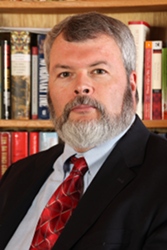
William S. Hettinger, Ph.D., president, Prosperous Communities
Photo: Prosperous Communities
A podcast interview with William S. Hettinger, Ph.D., president, Prosperous Communities, is available in the Podcast Section of Hispanic Marketing & Public Relations, HispanicMPR.com. During the podcast, he discusses the key to lifetime employment with Elena del Valle, host of the HispanicMPR.com podcast.
Bill is an international consultant and educator dedicated to training students, business owners, and managers in finance, entrepreneurship and small-business creation. The company he leads seeks to create economic vitality and help individuals and organizations turn ideas into actions.
He is also a principal at the Institute for Finance and Entrepreneurship, where he writes, trains, and mentors small business owners and aspiring entrepreneurs. Prior to establishing his consultancy, Bill worked in real estate and finance for several large institutional investors and for a Big-6 consulting firm. He is the coauthor of Finance Without Fear: A Guide to Creating and Managing a Profitable Business (see Consultants outline business finance basics).
To listen to the interview, scroll down until you see “Podcast” on the right hand side, then select “HMPR William S. Hettinger, Ph.D.” click on the play button below or download the MP3 file to your iPod or MP3 player to listen on the go, in your car or at home. To download it, click on the arrow of the recording you wish to copy and save it to disk. The podcast will remain listed in the October 2011 section of the podcast archive.
Posted by Elena del Valle on October 14, 2011
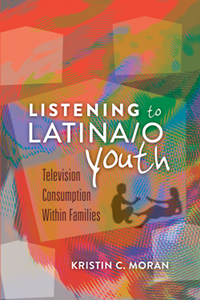
Listening to Latina/o Youth book cover
Photos: Peter Lang
Kristin Moran, associate professor in the Department of Communication Studies at the University of San Diego, was curious to know how Latinos consume media and their perceptions of Spanish language television as well as of the portrayal of Latinos in mainstream media. Toward that goal she conducted detailed interviews with 17 families in 2008 and again in 2010.
In Listening to Latina/o Youth Television Consumption Within Families (Peter Lang Publishing, $33.95) she shares her findings and conclusions. She begins with a demographic profile of the market segment she examined followed by an analysis of media targeting Latinos including Spanish language, bilingual and Hispanic oriented outlets.
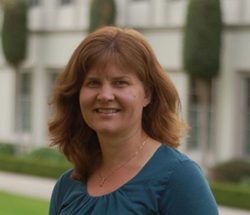
Kirstin C. Moran, author, Listening to Latina/o Youth
She dedicates the following chapters to her interview findings with an emphasis on the media consumption habits of youth and Mexican American families, addressing news and telenovela (Spanish language serialized programs similar to soap operas) preferences. She then addresses how the Latinos she met with see Latino portrayals in the media and their desire for balanced representation that integrates them into the mainstream rather isolating them.
In closing, she suggests that Latinos who speak Spanish do not necessarily watch more Spanish language programming. Instead second generation and younger Latinos seek English language programming that reflects their diversity.
The 215-page book is divided into six chapters: Latina/os in the Audience, Latina/o Youth Market, Latina/o Media Consumption, Connecting to “Home,” Concerning Representation Latina/os in English- Language Media, and (Re)Imagining a Latina/o Audience. It also has an Introduction and one appendix with family profiles.
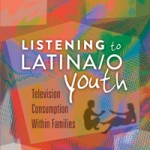
Click to buy Listening to Latina/o Youth
Comments:
Filed Under: Books
Posted by Elena del Valle on October 12, 2011

In 2010, 1 million Hispanics had an advanced degree
Photo: U.S. Census Bureau, Public Information Office (PIO)
The latest United States Census has broadened our knowledge of the national population including size and demographic trends, and provided a picture of the largest ethnic group’s growth. According to the Census, last year there were 50.5 million Hispanics in the country; they represented just over 16 percent of the population.
While the Hispanic market grew 43 percent in the last decade (2000 to 2010) the fastest growth for Hispanics was in the South and Midwest. More than three quarters of Latinos live in eight states: California, Texas, Florida, New York, Arizona, Illinois, New Jersey and Colorado.
The Hispanic population is younger than the mainstream. The median age among Hispanics is 27.4 for Hispanics.
When it comes to education there is room for improvement: 64 percent of Hispanic high school graduates ages 16-24 were enrolled in college in 2008, compared to 72 percent for non-Hispanic whites. In higher education the difference was greater: 13.9 percent of Latinos had a bachelor’s degree compared to 30.3 percent for the mainstream, and 4 percent had an advanced degree compared to 10.7 percent for non Hispanic whites.
In 2010, 2.4 million Hispanics including those in Puerto Rico were enrolled in college. Almost half (49 percent) of Hispanic college students attended a two-year institution compared to 37 percent of all college students.
Seen another way, in 2010, 63 percent of Hispanics 25 and older had a high school education or higher; there were 3.9 million Hispanics 18 and older with a bachelor’s degree or higher; 1 million Hispanics 18 and older had an advanced degree (see Educational Attainment in the United States: 2010 Detailed Tables)
.
In 2009, 12 percent of college students, undergraduate and graduate students, were Hispanic; and 20 percent of elementary and high school students were Hispanic (see School Enrollment – Social and Economic Characteristics of Students: October 2009).
Posted by Elena del Valle on October 10, 2011
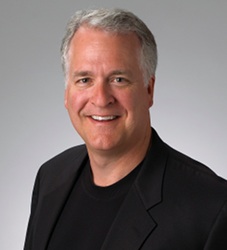
John Baker, creator, The Asking Formula
Photo: The Asking Formula
A podcast interview with John Baker, creator, The Asking Formula is available in the Podcast Section of Hispanic Marketing & Public Relations, HispanicMPR.com. During the podcast, John discusses how to ask for what you want with Elena del Valle, host of the HispanicMPR.com podcast.
John is a former senior executive and sales staff of American Express and Ameriprise Financial and a consultant. After spending several years studying the fears and trepidations people demonstrated in situations across the spectrum of human interactions he concluded that many people do not know the best way to get what they want. He documented the simplest tactics and strategies that he observed in people who were getting exactly what they were after.
John conceived of a process, an uncomplicated easy-to-repeat formula with six straightforward, adaptable steps, to achieve what he believes is the most compelling, confident and effective way to ask for what you want. He applied it in his own leadership and has taught it to many leaders and sales professionals in the country. He can be found at theaskingformula.com
To listen to the interview, scroll down until you see “Podcast” on the right hand side, then select “HMPR John Baker” click on the play button below or download the MP3 file to your iPod or MP3 player to listen on the go, in your car or at home. To download it, click on the arrow of the recording you wish to copy and save it to disk. The podcast will remain listed in the October 2011 section of the podcast archive.
Posted by Elena del Valle on October 7, 2011

Have a Nice Conflict book cover
Photos: News & Experts
For most of us conflict is part of daily life. At home and at work, with friend and colleagues most people an constantly exposed to conflicts or potential conflicts. Recent research, according to Tim Scudder, CPA, suggests that the top reason people leave their jobs is because of a poor relationship with their immediate supervisors.
Scudder, chief executive officer, Michael Patterson, Ed.D., vice president of business development, and Kent Mitchell, vice president of communications, of Personal Strengths Publishing, Inc., an international firm that prepares companies and their executives to better deal with conflict in the workplace, believe it is possible to prevent conflict.
Anticipate, prevent, identify, manage and resolve are the five steps they propose to prevent conflict. It is their opinion that conflict can become an opportunity to resolve long-standing issues and lead to more fulfilling and productive lives.
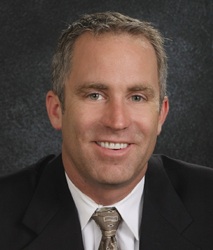
Tim Scudder, coauthor, Have a Nice Conflict
In Have a Nice Conflict: A Story of Finding Success and Satisfaction in the Most Unlikely Places (Personal Strengths Publishing, $19.95), a book they coauthored and published this year, they present a fictional conflict case study to address the conflict process.
“Unresolved or poorly managed conflict costs companies is ways they can’t even calculate,” said Scudder. “Lost institutional memory, low productivity, bad morale, high turnover all cost real companies real dollars. On the other hand, well-managed conflict can not only prevent all those losses, but it can also promote higher productivity and a stronger bottom line. So, the end result will not only be fewer conflicts, but also nicer ones with positive results.”
The 233-page hardcover book is divided into ten chapters. The three authors illustrate conflict issues by presenting Relationship Awareness Theory through the conflicts faced by John Doyle, a fictional character. They believe the character’s approach to conflict leads to positive results that resolve problems and “enhance the relationships of the people involved.”

Michael Patterson, Ed.D., coauthor, Have a Nice Conflict
Some of the suggestions shared in John’s Notebook at the end of the book include seeking to work well with others, helping to make people feel worthwhile, meeting others where they are and building the relationship whenever possible.

Click to buy Have a Nice Conflict
Comments:
Filed Under: Books
Posted by Elena del Valle on October 5, 2011
By Jennifer Dublino, chief operating officer, Scent Marketing Institute
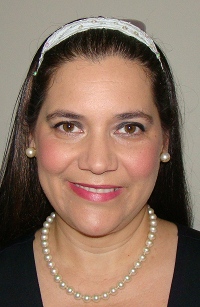
Jennifer Dublino, chief operating officer, Scent Marketing Institute
Photo: Scent Marketing Institute
Go to any Latin American country or Latino community in the U.S. and you will find that you are immersed in a multi-sensory experience. Colors seem more vibrant, music more dramatic, tastes more distinctive and the smells more heady.
I was born in Miami, and while not a Latina myself, grew up immersed in a delicious mix of various South and Central American and Caribbean cultures, with Cuban being predominant. Along with their close family ties and warmth, one of the things I love about Latinos is their passion for fully experiencing the world through the senses.
While each of the senses, to one extent or another, influences our behavior and mood, scent is the most powerful of our five senses after sight. Yet, when it comes to marketing, scent is often neglected in favor of solely visual and audio messages. When brands want to appeal to the large and growing Hispanic market in the US, this narrow use of the senses can be a big mistake.
Read the entire article Scent Marketing Connects to Hispanics on a Deep Cultural Level
Posted by Elena del Valle on October 3, 2011
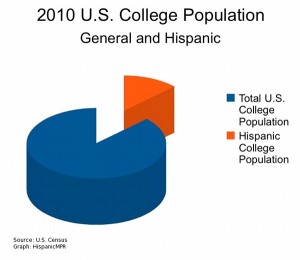
2010 college population – click to enlarge
Marketers and businesses targeting college youth should be aware that the demographic profile of college students is shifting. For many this is not surprisingly given the 2010 United States Census results. Last year there were 320,000 fewer non Hispanic whites in college compared to the year before. At the same time, the number of Hispanics in college for the same period increased by more than the decrease of non Hispanic whites.
There are approximately 12.2 million students attending higher educational institutions in the United States according to the Census. Of those about 1.8 million are Hispanics attending for profit and non profit institutions.
In 2009, there were 2,286,261 Hispanic undergraduate and graduate students at non profit institutions in the United States and Puerto Rico. By 2010 that number had increased to 2,476,417 resulting in an increase of 190,156, according to the Hispanic Association of Colleges and Universities (HACU). That organization’s source of data is Integrated Postsecondary Education Data System (IPEDS), Pew Hispanic Center Reports, The Condition of Education 2011, and the Digest of Education Statistics 2010.
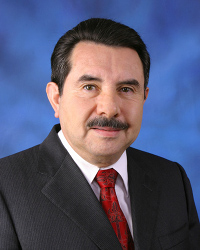
Antonio Flores, Ph.D., president and CEO, HACU
“We have seen a steady increase in the number of Hispanics entering higher education over the last several decades. The only surprising thing about this year’s increase is its size. Such a large one year increase in Hispanic enrollments underlines the importance of acting now to assure college and career readiness for this population which already makes up half of those entering the American workforce today but are still handicapped by low college attendance and completion rates,” said Antonio Flores, Ph.D., president and chief executive officer, HACU.
The Census data reflects 350,000 new Hispanic students attending college, a 24 percent increase between 2009 and 2010. That number is higher than the 190,156 increase above because it includes for profit and non profit organizations.
The largest increase of students in non-profit institutions from 2009 to 2010 was in California (71,952), Texas (52,464), New Mexico (5,538), New Jersey (5,428), and Florida (5,372). Hispanic student percentage distribution of fall 2009 enrollment: New Mexico, 42.4 percent; California, 30.3 percent; Texas, 29.7 percent; and Florida, 20.9 percent.
Posted by Elena del Valle on September 30, 2011
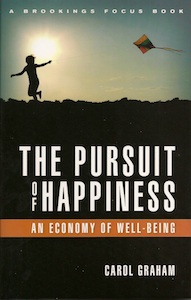
The Pursuit of Happiness book cover
Are wealthy people happier than poor and middle class people? Is a person’s state of happiness a reflection of his or her income? In other words, must income be tied to happiness? What is the relationship between the two? Is it more important to reduce misery or to improve a person’s emotional well being? Is well being tomorrow a good reason to sacrifice happiness today? Everyday people and veteran researchers continue to seek the answers to these questions, especially in the past decade.
This has prompted a burgeoning collaboration between economists and psychologists. Some countries have begun to examine and measure economic happiness issues and address their possible public policy implications. The Brazilian, British and French governments have established programs to measure happiness in relation to their country’s progress. From a big picture perspective this is a novel and controversial approach.
Should nations dedicate resources toward improving their citizens state of contentment or their economic well being? And in making those decisions is it better to focus on tomorrow’s or today’s welfare? Carol Graham, a researcher of “happiness economics” with a decade long track record, examines these issues in The Pursuit of Happiness: An Economy of Well-Being (Brookings Institution Press, $24.95), a 164-page hardcover book published this year.
The book is divided into five chapters: Happiness: A New Science, What We Mean by Happiness: A “Theory” of Agency and Well-Being, Happiness Around the World: What We Know, Adaptation and Other Puzzles, and GNH versus GNP?
Her international research and that of her colleagues has led her to what she calls the paradox of happy peasants and frustrated achievers, she explains in the first chapter. Around the globe she has found that poor people are on average less happy than wealthy people but very poor people often are very happy; poor people often say they are happier than the slightly wealthier among them and even the very rich.
In the absence of abject poverty (and in some cases excess wealth), health concerns, uncertainty, divorce, inflation and unemployment, it seems people across the world are amazingly resilient and adaptable; able to find a constant level of contentment (as defined by them in open ended survey responses), according to Graham.
She indicates that much evidence establishes that happy people are healthier and perform better in the labor market and may have a greater ability to lead purposeful lives than less happy people. Some happiness may be ideal, leading to contentment and purposefulness while too much happiness may lead to complacency, low performance at work.
Graham is a senior fellow in Global Economy and Development and Charles Robinson Chair in Foreign Policy at the Brookings Institution. She is also College Park Professor at the University of Maryland’s School of Public Policy. Her previous books include Happiness around the World: The Paradox of Happy Peasants and Miserable Millionaires, and Happiness and Hardship: Opportunity and Insecurity in New Market Economies.
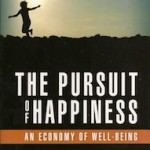
Click to buy The Pursuit of Happiness
Comments:
Filed Under: Books
























